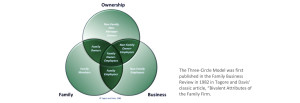Impact Stewardship and Family Business
I recently saw Perpetual Revolution: The Image and Social Change at the International Center of Photography in New York City. Included among the works on exhibit, a riveting video entitled “3 Seconds.” https://www.youtube.com/watch?v=iQYiRwNd7ug
“3 Seconds” begins by stating the age of the earth—4.5 billion years; time since the appearance of our species, homo sapiens—140,000 years. Then, conceptually condensing the earth’s lifespan into the space of one day, 24 hours, the video goes on to reveal that on that scale mankind arrived on the scene in the last 3 seconds of the day—3 seconds before midnight. With excruciating clarity the video presents images of the impact mankind has had on our world’s environment in just those 3 seconds… and asks: “what of the 4th second?”
What will be the impact of our stewardship in the next second, and the next?
In the condensed timescale the video suggests, the entire history of family business—the oldest form of business—has taken place in the blink an eye. Where will it go from here?
Stewardship, a concept readily understood in environmental issues, is also one of my favorite family business concepts. Simply stated: “My role as head of the family business is to receive it from my predecessor, care for it, nourish and grow it, and pass it on to the next generation in better condition than when I received it.”
This is a valuable consideration, as most family business don’t survive past their 3rd generation. What does the future hold for the 4th generation in your family enterprise?

